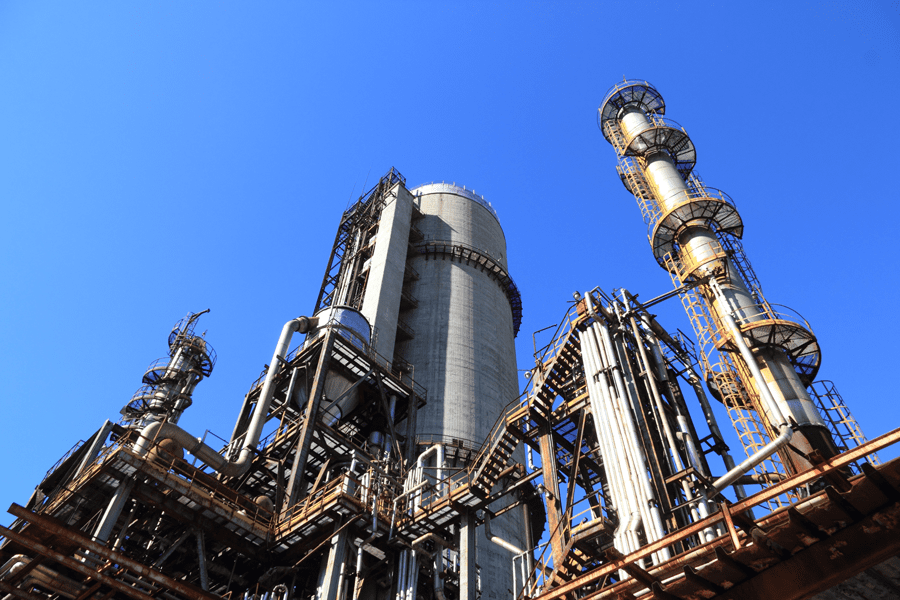Professionals in numerous industries know the importance of utilizing advanced technologies to continuously improve processes. Failing to do this could mean innovative companies overtake those that adopt technology more slowly.
For example, more than half of the refineries in the United States have closed since the 1980s. However, as those facilities get shut down, they’re replaced by more efficient facilities. Those specializing in petrochemicals could become incredibly profitable by embracing new technologies.
Numerous Options Improve Energy Efficiency
Energy efficiency is a common goal in petrochemical refineries. A study that examined the industry in the European Union explored how companies could use a combination of best-available techniques and innovative technologies to cut greenhouse gas (GHG) emissions without hindering output. For example, companies could achieve a 36 percent reduction in GHG emissions by 2050 while allowing a 45.6 percent increase in production for the sector.
More specifically, the research examines 26 key chemical processes and contrasts the current methods with more efficient options. For example, the paper recommends that soda ash plants transition to an integrated design and operation, and that those facilities install cogeneration units for their steam turbines. Such units achieve about 90 percent energy efficiency because nearly all steam coming from the turbines can be used during processing, the paper reports.
The research consists of nearly 250 pages of recommendations, plus expected results from each change made. When refineries opt to move forward with some of them in strategic ways, they could become more competitive in the short and long term.
Smart Sensors Promote Proactiveness
Becoming a more efficient petrochemical plant also means understanding when problems arise that could progressively make a facility less efficient or cause unplanned shutdowns. Investing in the Internet of Things (IoT) can give petrochemical brands more visibility, especially if they use connected sensors for predictive maintenance.
For example, Texmark Chemicals wanted to improve its refinery for the future. The company’s decision makers believed that one of the best ways to do that was through deploying smart sensors for better maintenance. It selected a three-phase process to add them to the enterprise’s operations. The company anticipates halving its maintenance costs due to the change and spending 1,000 fewer hours conducting walk-downs and vibration analyses to diagnose problems.
Even before major issues result, smart sensors can notify people of concerning statistics. Compressed air is a crucial part of petrochemical refining. Methanol, urea, ethylene and others require precise air pressure levels during manufacturing. However, leaks can result in 20 to 30 percent of a compressor’s total output going to waste. People commonly confirm leaks when they hear hissing sounds. However, in a loud factory, it may be difficult or impossible to detect them until major problems develop.
Smart sensors continually gather statistics and alert authorized personnel to suspicious deviations. Some products offer centralized dashboards where people can set thresholds and make alerts come through if specific metrics fall outside an expected range.
The Future of Petrochemical Facilities Looks Different
Some of the most efficient petrochemical facilities of the future may be those where the leadership is bold enough to drastically change operations through pioneering approaches. Many companies are ramping up their investments in petrochemicals, particularly due to trends such as society’s decreasing dependence on gasoline.
Construction on a Saudi Arabian facility is underway to build a plant that turns a substantially higher percentage of crude oil into petrochemicals. It aims to produce nine million metric tons from 400,000 barrels of light Arabian crude oil per day. Whereas most petrochemical refineries only convert five to 20 percent of the oil into petrochemicals, this facility may bump that up to 45 percent.
There’s also the possibility for existing refineries to reconfigure their facilities to focus on petrochemicals. Taking this route could prove profitable if the parties involved do it promptly enough and in the most appropriate ways. After all, there is a long history of ties between refineries and petrochemical plants. Moreover, some refineries had small, on-site petrochemical production arms, but most treated petrochemicals as afterthoughts. That’s starting to change.
Besides an emerging trend of existing refineries focusing more on petrochemicals, some newly built ones have plans for petrochemicals from the start. One example is China’s Zhejiang Petrochemical Project. It’s a two-phase initiative consisting of two refineries. Petrochemicals will comprise nearly half of the overall output at the facility.
Process Changes Can Get Results
It’s understandable if the leaders of some refineries balk at going ahead with such massive undertakings for new construction or retrofits. The good news is that companies can become more efficient even by committing to changing one or a few vital processes identified as particularly energy intensive.
A research team recently announced that it engineered a polymer membrane technology that significantly reduces the carbon emissions and energy requirements associated with refining crude oil. The currently utilized heat-based distillation processes use 1,100 terawatt-hours per year of energy or the equivalent of what’s used in New York during that same timeframe.
The people working on the project clarified that they could substitute their low-energy membranes for specific steps in the distillation process, resulting in a more efficient process. This approach is reportedly the first instance of using a synthetic membrane to separate crude oil and crude oil fractions.
Other industries use membranes for various reasons, such as to remove salt from seawater. However, until now, membranes proved unfeasible for working with crude oil due to the complexity of the process. The group dealt with those known challenges by creating a novel spirocyclic polymer that they applied to a robust substrate. This approach allowed designing a membrane that separates complex hydrocarbon mixtures with pressure rather than heat.
They tested it with synthetic fuels first. Then, after running those experiments, they examined how the membrane performed with crude oil. The results showed that the membrane effectively recovered gasoline and jet fuel from a complex mixture. Although further research will verify whether this approach has the potential for real-world, widespread applications, the early outcomes seem promising.
The example above shows how some companies could make relatively minor improvements to their processes and see impressive payoffs. As more companies make such adjustments, they could spark broader change in the industry by making their peers feel more confident about following their lead.
Efficiency Improvements Must Match Company Needs
One thing that undoubtedly will become clear as this transitions toward more efficient petrochemical refineries is that there is no universal path to guaranteed results. Company leaders leaning toward making these changes should stay abreast of what’s possible, then combine that information with what’s most appropriate with their current factory layouts or plans for future facilities under construction.
Headline photo courtesy of Pixabay
Emily Newton is the Editor-in-Chief of Revolutionized, an online magazine discussing the latest industry innovations and trends.






